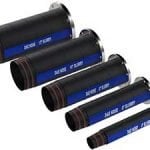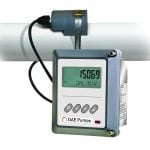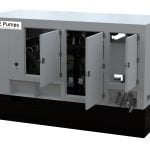Screw Pumps T-Range – 68m3/hr / 300 GPM

Screw Pumps T-Range – 68m3/hr / 300 GPM
The DAE Pumps T-range is designed as a low-cost general industrial pump for clean liquids. It is constructed in high-grade cast iron and features a mechanical seal and integral relief valve as standard. This makes it ideal for use in many applications, including those requiring high pressure and high temperature.
Smaller T-range pumps are generally available in ex-stock, with the larger units available on short lead times. T-range pumps are designed to operate in environments with temperatures that range from degrees Celsius to +400 degrees Celsius. The pump’s casing and internal components are made from high-strength materials that can withstand high temperatures.
Freestanding, horizontal, vertical, and tank top mounted units are available, closely coupled to electric motors.
Pumps can be supplied with a bare shaft or assembled by the driver in various arrangements, including vertical tanktop, pedestal, and baseplate options, with a spacer or non-spacer couplings and non spark guards.

Get Pricing
Screw Pumps T-Range
T-Range Specifications
| Max Capacity | 0.2 to 68.0 M3/hr | 1 to 300 USGPM |
| Max Discharge Pressure | up to 20 Bar | 290 Psi |
| Suction Pressure | up to 2.5 Bar | 35 Psi |
| Viscosity | 2 to 1750 cSt | 33 to 8100 ssu |
| Max Temperature | -20 to +200 C | -4 to 390° F |
NOTE: *Higher viscosities can be accommodated on request
Features:
- Silent running
- Environmentally acceptable for site operators
- Pulse free flow
- Ensures no emulsification of liquid, ideal for shear-sensitive liquids
- Vibration free
- No costly foundations are required nor transmitted vibration through the system to downstream equipment
- Compact design
- Lower capital cost and space-saving installation
- High operational speed
- No intermediate speed reducers required; can run directly from high-speed power take-off, e.g., gearboxes
- High volumetric efficiency
- Low running costs

Screw Pump T-Range Usage
DAE Pumps Screw Pump T-Range can be used on any clean lubricating liquid chemically compatible with construction materials.
-
- Lubricating Oil
- Hydraulic Oil
- Orimulsion
- Distillate Fuel Oil
- Residual Fuel Oil
- Crude Oil
- Grease
- Bitumen / Asphalt
- Viscose
- Fats
- Plasticizers
- Printing Inks
The lower viscosity limit is two cSt (gas oil at ambient temperature). This limit ensures that there is sufficient film strength for hydrodynamic support. The upper viscosity limit of 1750 cSt is determined by the standard mechanical seals’ operating limit. At reduced speed and an alternative mechanical seal, viscosities up to 5000 cSt can be accommodated.

Applications:
The Screw Pump Machine range is designed for medium pressure high flow applications on clean liquids.
-
- Lube Oil Transfer
- Fuel Oil Transfer
- Orimulsion Transfer and Firing
- Scavenging
- Fuel Oil Pumping and Heating Sets
- Duplex Pump and Filter Sets
- Rail/Road Car Loading and Unloading
- Hydraulic Power Packs
- Watertight Door Operation
- Elevator / Lift Pumps
- Variable Pitch Propeller Control
- Bitumen Production and Loading
- Fats Transfer
- iscose Production
Accessories:
Get turnkey solutions that include dredge hoses, slurry flow meters, power units, and more. Choose from multiple sizes of slurry hoses for the transferring of materials, wireless flow meters for measuring the flow rate in gallons per minute of liquid, and power units for operation. Parts are always in stock and available for immediate shipping to anywhere in the US and the world.
Screw Pumps T-Range FAQs
What is a screw pump?
A screw pump is a type of positive displacement pump that utilizes rotating screws to move fluid through the pump. These pumps are known for their ability to handle viscous fluids and provide a steady flow rate with minimal pulsation.
How does a screw pump differ from other types of pumps?
Screw pumps operate by trapping fluid between the rotating screws and the pump casing, gradually moving it from the inlet to the outlet. Unlike centrifugal pumps, which rely on impellers to generate fluid flow, screw pumps provide continuous and uniform flow, making them ideal for applications requiring precise control and high efficiency.
What are the key features of screw pumps in the T-Range?
The screw pumps in the T-Range are designed with features to optimize performance and reliability in industrial applications. These features may include precision-engineered screws and casings for tight tolerances, durable materials for wear resistance, and efficient sealing mechanisms to prevent leakage and ensure smooth operation.
How does a rotary screw pump operate?
A rotary screw pump, also known as a helical screw pump, operates by rotating intermeshing screws within a casing. As the screws rotate, they trap and move fluid from the inlet to the outlet, creating a continuous flow with minimal turbulence and pulsation. This design provides efficient and reliable fluid transfer for a wide range of applications.
What are some common applications of screw pumps?
Screw pumps are used in various industries for applications such as lubrication systems, hydraulic systems, fuel transfer, chemical processing, and wastewater treatment. Their ability to handle viscous fluids, high pressures, and variable flow rates makes them versatile and well-suited for a wide range of industrial processes.
How can I determine if a screw pump in the T-Range is suitable for my application?
Determining the suitability of a screw pump in the T-Range for your application involves considering factors such as the type of fluid being pumped, flow rate and pressure requirements, temperature and viscosity of the fluid, and compatibility with system components. Consulting with a dredging and industrial pump expert can help you select the appropriate pump for your specific application and ensure optimal performance and efficiency.





